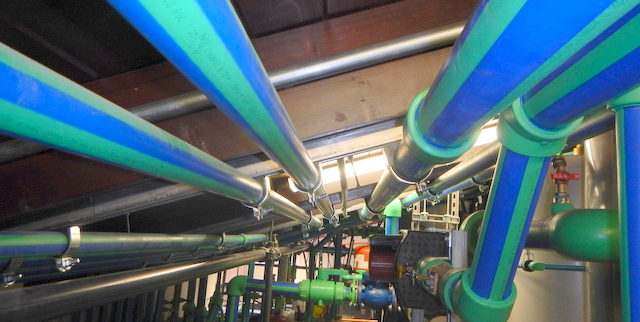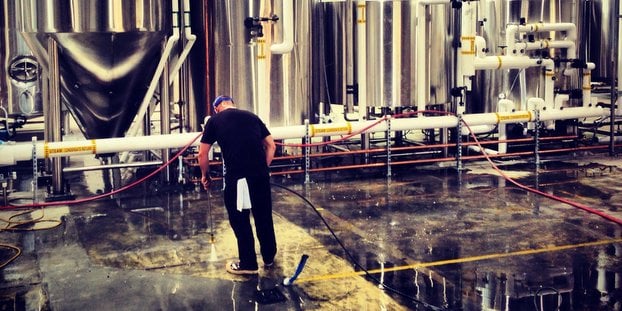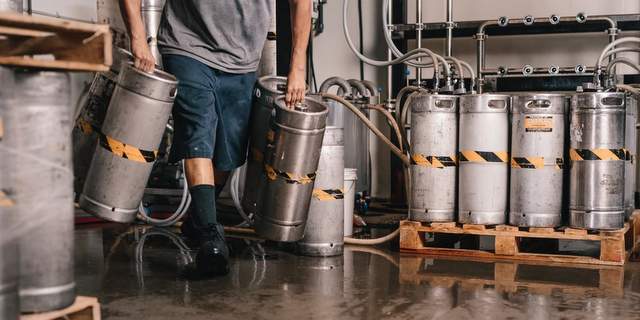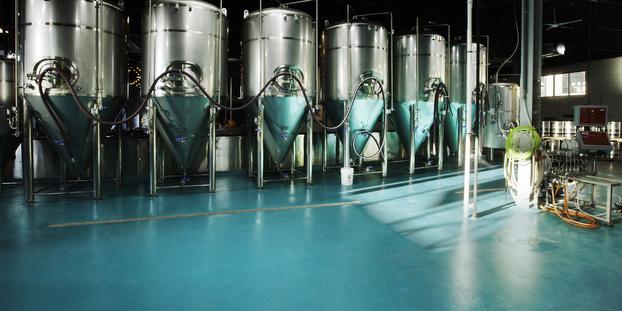Water and moisture damage can wreak havoc in any facility. However, unlike most warehouse environments, breweries have to combat a lot of water to do the job. In fact, according to the Brewers Association, it takes approximately seven barrels of water to produce one barrel of beer.
Water and moisture damage are the most significant causes of commercial property damage. Uncontrolled water and moisture can destroy the structural integrity of a building, cause mildew and mold build-up, and cause cracks on the floor, ceilings, and walls. Additionally, water and moisture can ruin inventory, merchandise, and more.
In a brewery, humidity and moisture are top concerns. How can you protect your brewery from water and moisture damage?
Invest in a high-power dehumidifier
There’s no getting around the moisture in the air. You’re continuously brewing barrels of beer, and these beers have to be stored in vessels at low temperatures for weeks. There’s no way of getting around the inevitable condensation and moisture load. You have moisture and condensation in the air, on the surrounding pipes, walls, and floor.
The best thing you can do to protect your brewery and prevent water damage is to invest in a high-quality, high-capacity dehumidifier to suck that moisture out of the air and reduce the overall humidity. Some larger breweries even have more than one dehumidifier. Ultimately, finding the right dehumidifier for your brewery will be the first crucial step towards protecting your facility from water and moisture damage.
Install floor drainage solutions

Food and beverage warehouses always include a flooring drainage solution. Your options range from large grate drains to more hidden solutions like a concrete driveway drain. Ultimately, the goal of a drainage system is to provide a place for spills to go.
Drainage is especially crucial for breweries because your output of wastewater is so high. Wastewater management should be one of your top priorities when running a brewery, and a comprehensive drainage solution is the first step to getting a handle on wastewater management.
While many breweries today still use trench drains, slot drains are much more sanitary. They’re made from stainless steel, too, so you don’t have to worry about brewery waste corroding the system. Floor drainage is just one part of the wastewater management puzzle. However, it’s incredibly important. Not only does it help with controlling your wastewater, but it also enables you to avoid the standard damages from standing water.
Use top tier piping

When pipes burst, it can be devastating for any property. The same goes for breweries — except that the chances of your pipes bursting are a lot higher than average. Brewery wastewater has an incredibly high pH level that can eat away at pipes and drains. So, it would be best if you used top-tier piping and drains from the start. Go with stainless steel or durable plastics. Avoid the temptation to go with cheaper solutions, because they will cause much higher costs in damages in the long run.
Protect your floors
If you’re like most breweries, you likely have either standard concrete or polished concrete floors. Concrete is an ideal flooring choice because it’s cheap to install and it’s generally very durable. However, concrete is prone to cracking with too much moisture exposure. As we’ve already touched on, breweries have a lot of moisture. Also, when concrete is wet, it’s likely to become very slippery, making it a tripping hazard for your employees and patrons.
The best way to alleviate these risks is to apply a water-resistant sealant to your concrete floors to help block out moisture. For optimum protection, go with a penetrating, impregnating sealer that hardens and densifies the concrete while simultaneously providing a surface barrier.
Final considerations

Keeping your brewery moisture and water-free is no easy feat. However, you have to be proactive to protect yourself from costly water and moisture damages, In addition to the ideas above, you also need to instill some other water management solutions and habits. For instance, develop a practice of cleaning up spills, wiping down condensation and regularly checking for mold.
Consider adding water control measures outside the facility like porous paving, outdoor drainage and more. This ensures that you don’t run into any regulatory wastewater buildup issues. As long as water and moisture management is a part of your focus, you can avoid many headaches down the road.
Matt Lee is the owner of the Innovative Building Materials blog and a content writer for the building materials industry. He is focused on helping fellow homeowners, contractors, and architects discover materials and methods of construction that save money, improve energy efficiency, and increase property value.





Leave a Reply
You must be logged in to post a comment.